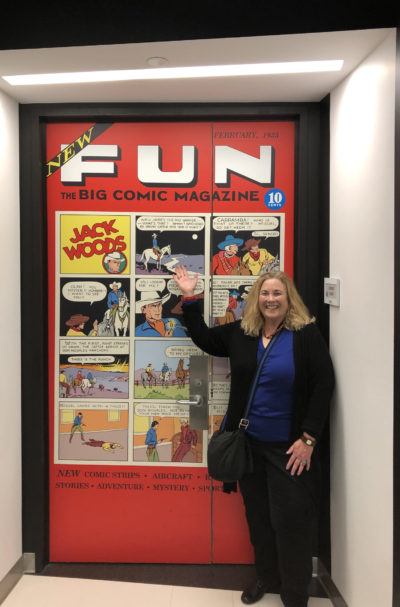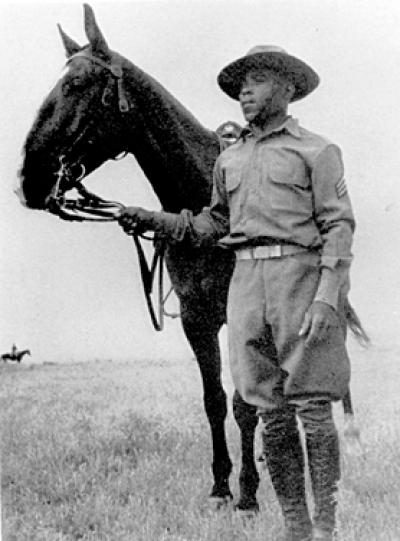It’s a super heroic birthday for the Major—130 years ago January 7, 1890. And it’s only taken 20 plus years to get a semblance of recognition for the man. I say semblance because his name should be synonymous with comics and that hasn’t quite happened yet.

MWN circa 1920 from Strahan family collection. Please do not publish without permission.
As Uncle Douglas and I were told on the occasion of touring the DC offices in New York in 2004—“If it weren’t for your grandfather, I wouldn’t be here.” To which, I replied—“neither would I!” This has been said to me, many, many times since by people in the industry and yet there are still people—gatepersons, if you will–in the industry who have the opportunity to support recognition of the Major’s accomplishments and yet, do not. And along with those gatepersons there are some comics historians who continue to buy in to the old Donenfeld and Liebowitz scenario of–he wasn’t really here–and if he was here, he didn’t do anything–and if he did do anything, he was a terrible person. Right. Here’s a news flash for those of you who refuse to acknowledge or recognize the Major’s contributions to comics—even WB/DC recognize the man! Wake up and join in on the FUN. We’d love to have you at the party.
I just finished a short essay on the Major for the University of Chicago Press for Source: The Comics Issue—thanks to Arne Flaten for including the Major. I’ve written and spoken about the Major for so many outlets including my recent book DC Comics Before Superman—thanks Dan Herman and David Armstrong–that you’d think I could do it on autopilot. But each time, I write MWN’s story I struggle to put it into just the right words—often because I have to cram a huge life into a few words. And each time I write it, I want to include the latest research and each time I write the Major’s story I think about those who will read it and what I want them to know.

So, here’s what I want you to know about the Major. It’s in two parts because it’s going to take that much room! Part Two will continue on Saturday to mark the 85th Anniversary of DC Comics with the appearance of New Fun #1 on January 11, 1935.
Major Malcolm Wheeler-Nicholson was born in Greeneville, Tennessee and grew up there and in Portland, Oregon in a household with a strong female presence—his mother—Antoinette Wheeler. Antoinette was a writer, an editor, a suffragette and out in the world at a time when most women did not leave the home. She instilled in MWN, a pride in his ancestry especially of his grandfather, Christopher Wheeler, wounded in the Civil War and afterwards a doctor and newspaper publisher. Antoinette encouraged in MWN a love of Scotland and a love of the romantic ideals of knighthood partially to overcome his father, L. O. Strain’s weak character. And she passed on to him the family love of horses. It’s not a surprise that MWN would create strong female characters and no surprise that he wrote a number of swashbucklers and that horses often figure in his adventure stories.
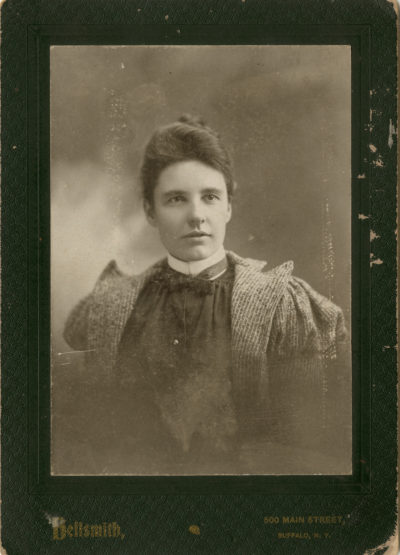
Antoinette Wheeler-Nicholson circa early 1890s. Family collection. Please do not publish without permission.
Joining his mother in the suffragette custom of hyphenating her last name he also took his stepfather’s last name of Nicholson. MWN headed to St. John’s Military School in 1909 finishing in 2 years instead of the usual 4. He began his military career on the Mexican Border chasing bandits and by 1915 commanded a troop of African-American Buffalo soldiers in the Philippines. Witnessing the prejudice his troops endured he challenged his superior officer to a contest of Machine Gun Readiness meaning riding up at a full gallop, jumping off the horse and putting the Machine Gun together. The Major, in just a few short weeks, turned his men into a world-class Machine Gun troop breaking all records and written up in books and magazines of the day. His experiences with the Buffalo Soldiers would be another influence upon his writing.
In late 1916 the Major, under assignment to Military Intelligence traveled to Japan, China and Siberia. He was with the American Expeditionary Forces in Siberia during WWI and the Russian Revolution. It was an exotic world and a rich moment in history for a writer to experience. Many of his later stories and comics would reveal those experiences and influences in Siberia and the Far East.
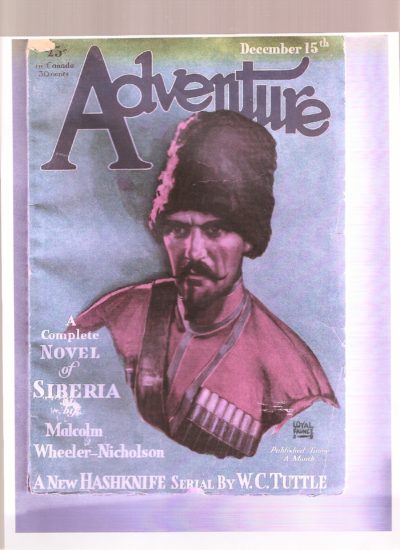
Posted to Paris after the war, MWN met the beautiful Swedish aristocrat, Elsa Karolina Bjorkbom. These two idealistic romantics found one another in Paris during the Roaring Twenties. According to the family story the Major proposed to Elsa at the top of the Eiffel Tower as the band played “Fascination.”

Elsa Karolina Bjorkbom circa 1920s. Family collection. Please do not publish without permission.
MWN’s idealistic notions were soon to come into conflict with his superior officer and by 1920 the Major was headed back to the US and towards a court martial under questionable events. The drama that ensued involved what appears to be an assassination attempt and a letter to President Harding that was published in the New York Times. When the trial finally took place, all charges were dropped with the exception of the published letter in the New York Times. It’s a complicated story that takes up two chapters in the coming book. Military Historian Robert Wettemann has presented several papers on the subject including “The Billy Mitchell of the Calvary.”
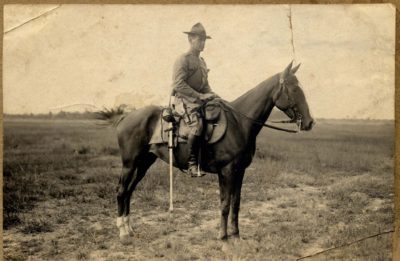
MWN circa 1915 Ft. Bliss from Antoinette Wheeler Harley collection. Please do not publish without permission.
Discouraged with military bureaucracy and wanting to follow his dream of writing, MWN, left the Army and began his second career that would last most of his life—writing adventure stories for pulp magazines. The pulps so-called because of the pulpwood paper on which they were printed were highly popular in the 1920s and 30s featuring 100s of magazines such as Adventure, Argosy, Thrilling Stories, Detective Stories and many more. The first known story of MWN’s was “The Wolves” published in McClure’s magazine August 1924 and the last known is “Rifles for the Apaches” published in Triple Western Winter 1956. MWN wrote adventure stories based on his experiences in the US Army as well as westerns, detective stories often featuring a Federal agent as the good guy and a number of swashbucklers about pirates and medieval knights. These plots and characters would appear later in comic book format.
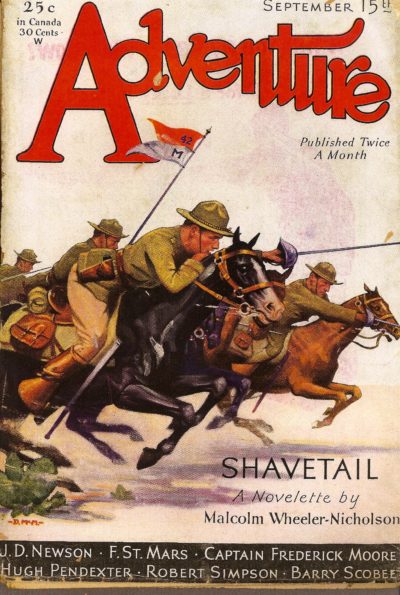
Not content with being one more writer attempting to get published MWN took control of his destiny by becoming a publisher himself and starting a newspaper syndicate in 1925, Wheeler-Nicholson Inc. publishing political cartoons, comic strips and articles. He published original comics like “Vivian Vanity” the flapper and sometime detective, as well as adaptations of classics such as Treasure Island and The Three Musketeers prefiguring what was to come with his comics magazines in 1935. He was no match for the muscle of syndicates like the Hearst Corporation and by the end of 1926 went back to writing adventure stories for the pulps.

Writing for the pulps was lucrative and MWN, Elsa and their children moved to France with a flat in Paris and renting an ancient chateau in Vic sur Aisnes. From the photographs of the time it appears to have been idyllic with a houseful of friends and relatives, dinner parties, tennis and all the while the Major writing away. The chateau in Vic sur Aisnes would be a location for a number of his stories including “The Road Without Turning” nominated for an O’Henry Short Story Award.
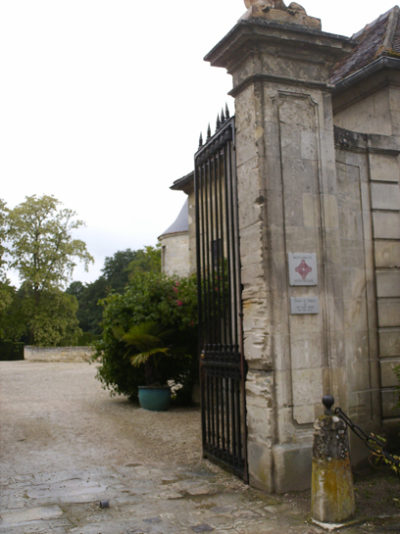
Entrance to chateau Vic sur Aisnes. 2009 trip to France.
Like all idyllic moments this one came to an end with the advent of the Great Depression. MWN’s income along with his fellow writers decreased and the family returned to New York. Like almost everyone else in the country times became difficult and the Major had to figure out a way to take care of his family that now consisted of five children. The Major, never one to lack courage, had an aha moment seeing the British Comic Cuts on the newsstands. His big idea was to create a uniquely American comics magazine and Major Malcolm Wheeler-Nicholson audaciously decided to do so right in the middle of the Great Depression.
Stay tuned for Part Two on Saturday and all that happened after. Raising a glass to you, Nick. I’m proud to be your granddaughter.

